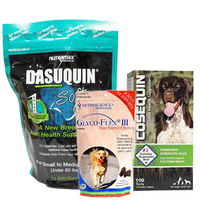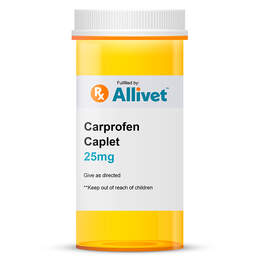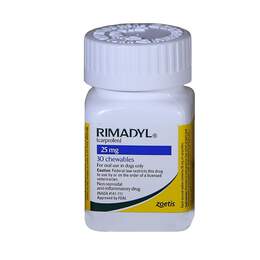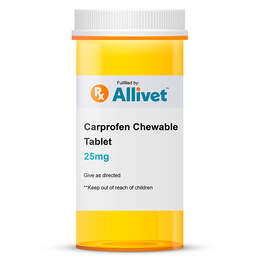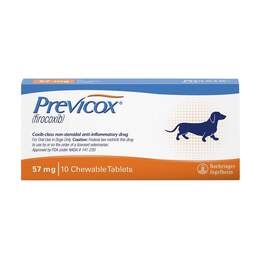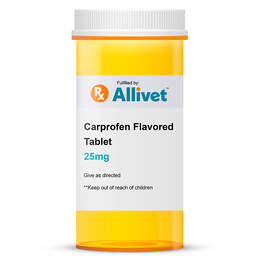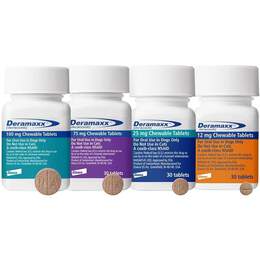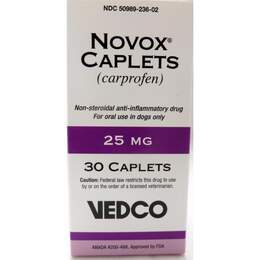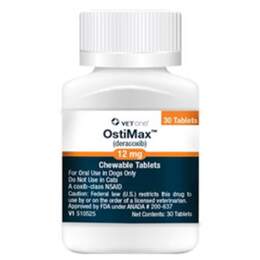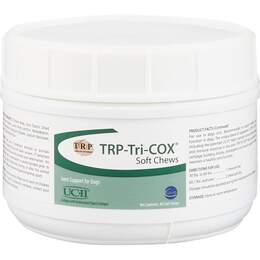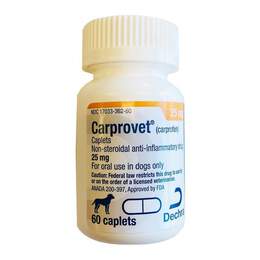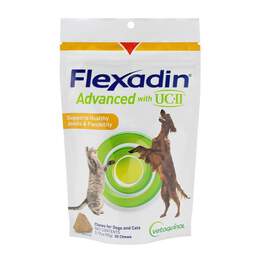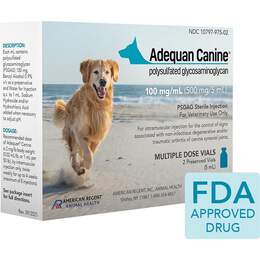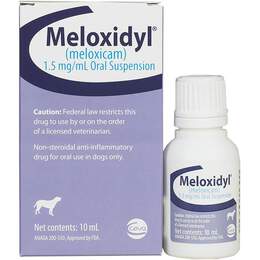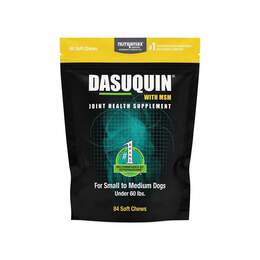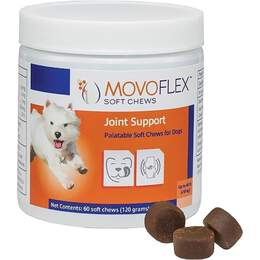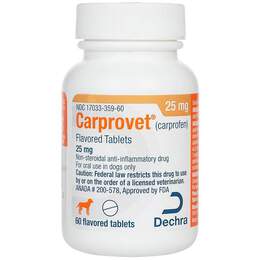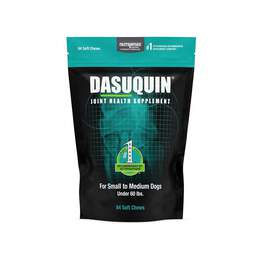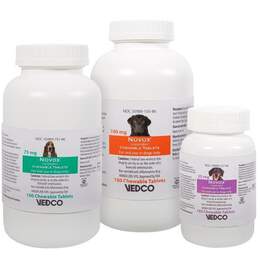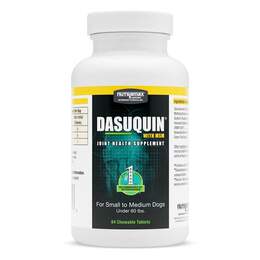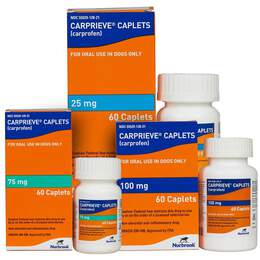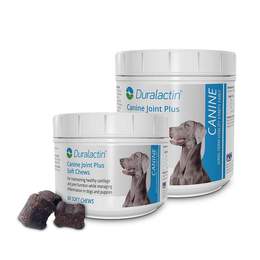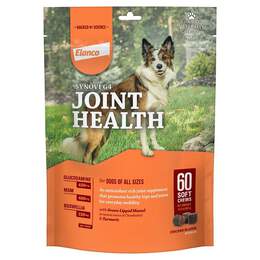Dog Joint Care
We all want to make sure our beloved dogs live long and happy, healthy lives free from pain. As dogs age, they begin to experience joint deterioration and pain, just like we do. It's just as important to take care of our dog's joints as it is to take care of our own. As your four-legged friend ages, their joints often become painfully stiff, preventing them from fully enjoying a pain-free life.
This makes dog joint care an essential part of their overall wellness. Dog joint and arthritis medications such as supplements, anti-inflammatory drugs, and pain relievers can help dogs deal with the symptoms of joint inflammation. If your dog struggles to stand up, has slowed down on their walks, or shows signs of pain, take them to your veterinarian as soon as possible for evaluation, diagnoses, and, if needed, joint care.
Signs Your Dog May Be Experiencing Joint Pain
Dogs can begin to experience joint pain at middle age, and the majority of dogs more than eight years of age will have osteoarthritis or joint pain in their joints. Sings of joint pain include:
- Lameness, Inactivity, Stiffness
- Reluctance to Exercise, Rise, Move
- General Signs of Pain
- Swollen and Painful Joints, or Joint Effusion
- Crepitus in the Joint
- Abnormal Stance While Moving
- Muscle Atrophy
- Altered General Behavior
Another big sign that your dog may be suffering from joint pain is when they don't seem like themselves. However, there may be other causes for a change in behavior or temperament that should be ruled out first. Changes in behavior can vary from dog to dog, and their breed, and their character.
The most common behavior changes seen in dogs with joint pain are:
- Depression
- Lethargy
- Aggression and irritability when the joints are touched
- Flinching or increased body tension in response to gentle pressure in areas such as the neck, leg, back, elbows, and hips
- Loss of appetite
- Weight gain, generally due to lack of mobility and inability to exercise
If you notice that your dog has some of the symptoms above show, a quick trip to the veterinarian can help you find out what is causing them. And if there is an issue causing your dog's joint pain, your veterinarian will develop a treatment plan that will decrease their discomfort and improve their quality of life.
Causes of Joint Problems in Dogs
Joint problems are not uncommon in dogs, especially as they age. Arthritis is a major cause, but not the only one that affects a dog's joints. These joint issues run the gamut from slightly annoying to chronic to serious injuries that cause joint instability and may require surgery. Joint problems can happen at any time in a dog's life but are generally more common as they age.
Osteoarthritis
This degenerative joint disease is by far the most common cause of long-term joint pain in dogs. It is often a symptom of many of the issues listed below and, of course, old age. This condition occurs when the cartilage breaks down and the bones begin to rub against each other. It is a progressive condition that continually gets worse. Depending on the severity of the condition and the dog's age, there are many methods of joint care for dogs that can help alleviate the pain.
Lyme Disease
Dogs contract Lyme Disease when bitten by deer ticks carrying the virus. It results in fever, swollen lymph nodes, lameness, and joint inflammation. It may take as long as two to five months for a dog to have symptoms. Flea and tick prevention can help keep dogs from getting this disease.
Loss of Cartilage
While there are numerous causes, loss of cartilage in the dog's joints is the main one. This connective tissue protects the joints and keeps the joint bones from rubbing against each other. And unlike other tissues, such as muscles and skin, cartilage does not regenerate. This is not an illness or disease, it is due to aging.
Developmental Disorders
Hip and elbow disorders are common in many large dog breeds such as Great Danes, German Shepherds, Rottweilers, Labrador Retrieves, Golden Retrievers, and Saint Bernards. Small dog breeds such as Yorkshire Terriers, West Highland White Terriers (Westies), and Miniature Poodles can suffer from Legg-Calve Perthes. This disease presents in puppies and may cause malformed hips and secondary arthritis.
Congenital Disorders
Congenital disorders such as Wobblers Disease and luxating patella are present at birth and usually develop further as the dog grows and develops. While rare in the majority of breeds, Wobbler's Disease is a serious condition that often affects Doberman Pinschers and Great Danes. Small breeds and breeds with short legs can suffer from luxating patella.
Fractures
When bones heal from fractures, they rarely return to their original shape. This can cause an imbalance in a dog's skeletal structure which will affect the joints over time and may lead to arthritis.
Tendon and Ligament Injuries
Anterior cruciate ligament or ACL injuries are the most common tendon and ligament injuries in dogs. These injuries can cause severe joint pain. These types of tears can occur when a dog suddenly changes directions while running.
Hormonal Conditions
The imbalance in calcium and phosphorus caused by hormonal conditions such as hyperthyroidism (overactive thyroid) can have a secondary effect on a dog's joints. When the levels are out of balance, the strength of the bone deteriorates, causing inflammation and joint pain.
Cancer
Synovial Sarcoma is a rare cancer that affects the soft tissue surrounding a dog's joints. It begins with lameness, loss of appetite, and weight loss. As the tumors grow, they put pressure on the dog's joints and inhibit their ability to run or walk.
Spinal Disease
Spinal diseases such as intervertebral disc disease may, over time, cause joint pain in dogs. Although it is hard to determine why this disease occurs, it is thought that genetics may play a role. Breeds such as Basset Hounds, Beagles, Dachshunds, Corgis, Cocker Spaniels, Lhasa Apsos, Shih Tzus, and Pekinese are more at risk for this condition.
How to Relieve Joint Problems in Dogs
Unfortunately, joint issues can be life for dogs. Aging is never easy. So, while you may not be able to prevent your dog from having joint pain, there are things you can do to keep it from happening and reduce the pain if it does.
Diet and Weight
The extra pressure obesity puts on a dog's joints increases their chances of injury as well as wear and tear on the joints. A part of overall dog joint care is ensuring that your dog maintains a healthy weight with regular exercise. A healthy diet can help them build muscle, avoid injury, and reduce pain if any issues do occur.
Exercise
Dogs often love playing so much that they don't know when to stop. Sometimes, it's up to you to decide when your dog has had enough. While dogs need exercise to stay healthy, over-activity can stress their joints and increase the chances they may have issues.
Joint Care for Dogs
If you are worried that your dog may be developing joint issues or has joint pain, take them to your veterinarian as soon as possible. It's never too early to be on the lookout for joint issues and treat joint pain. Consult with your veterinarian about joint care for dogs and how you can help alleviate their pain and improve their quality of life.



